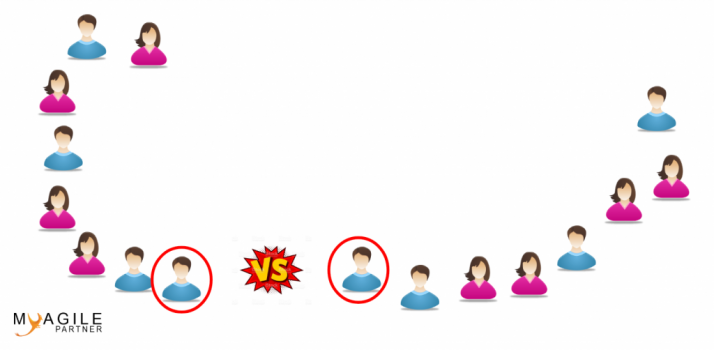
In today’s dynamic and competitive business landscape, organizations are continually seeking ways to optimize their workforce’s potential and performance. One valuable tool in this pursuit is the skill matrix, a strategic tool that helps businesses manage, assess, and enhance the skill sets of their employees. In this article, we will delve into what a skill matrix is, its importance, and how it can benefit organizations in various industries.
What Is a Skill Matrix?
A skill matrix, also known as a competency matrix (really similar) or a skill inventory matrix, is a visual tool used by organizations to map and evaluate the skills and competencies of their employees. It provides a structured overview of the skills, qualifications, and proficiencies possessed by individuals within a team or department. Skill matrices are typically created in spreadsheet format, with employees listed on one axis and specific skills or competencies listed on the other.
The cells of the matrix are filled with information indicating each employee’s proficiency level for a particular skill. These proficiency levels are often categorized as:
- Basic: Employee has fundamental knowledge but lacks practical experience.
- Intermediate: Employee has a working understanding and can perform tasks with moderate supervision.
- Advanced: Employee possesses an in-depth understanding and can work independently.
- Expert: Employee is a subject matter expert, capable of mentoring others.

Why Are Skill Matrices Important?
- Skill gap identification: Skill matrices enable organizations to identify gaps in their workforce’s skill sets. By recognizing areas where skills are lacking or outdated, companies can strategically plan for training and development initiatives to bridge these gaps.
- Resource allocation: Skill matrices help in optimizing resource allocation. Organizations can assign the right employees with the required skills to specific projects or tasks, ensuring efficiency and effectiveness.
- Succession planning: Understanding the skills of individual employees is crucial for succession planning. By identifying potential successors with the necessary skills, companies can ensure a smooth transition in leadership positions.
- Training and development: Skill matrices aid in designing targeted training programs. They provide insights into which skills need improvement and can guide the development of personalized training plans for employees.
- Performance appraisals: Skill matrices serve as a valuable reference during performance appraisals. Managers can objectively assess employees’ skills, set performance goals, and provide constructive feedback.
- Career pathing: Employees can use skill matrices to identify areas for skill enhancement and career growth. It helps in aligning individual career goals with the organization’s objectives.
Implementing a Skill Matrix
Creating an effective skill matrix involves several steps:
- Identify key skills: Determine the critical skills and competencies required for each role within your organization.
- Assess employees: Evaluate your employees’ skills through self-assessments, manager assessments, or skill tests.
- Define proficiency levels: Establish clear definitions for proficiency levels, ensuring consistency in evaluations.
- Create the matrix: Develop a spreadsheet or software-based skill matrix, listing employees and skills.
- Populate the matrix: Fill in the matrix with data based on employees’ proficiency levels for each skill.
- Regular updates: Continuously update the skill matrix to reflect changes in employees’ skills and development.
Conclusion
In today’s fast-paced business environment, staying competitive demands a skilled and adaptable workforce. Skill matrices provide organizations with a structured approach to managing and improving employee skills, ultimately contributing to enhanced productivity and success. By regularly assessing and addressing skill gaps, organizations can remain agile and thrive in an ever-evolving marketplace.




Be the first to comment